Shipwrecks: Bell Island, Newfoundland
diving with Ocean Quest Adventures
 |
| Panoramic view from the Northern tip of Bell Island across Conception Bay: Bell Island Lighthouse at right |
History of the Bell Island Wrecks
|
Bell Island, located in Conception Bay on the Avalon peninsula on the east cast of Newfoundlad, Canada, holds rich, high quality iron ore deposits. Mining the ore began in 1895. Two ore beds, an "upper bed" and a "lower bed" run in layers in the sedimentary rock, and both run under the sea bed in addition to beneath Bell Island itself. The ore beds slope downward at an angle of ~10 degrees, and as the surface deposits were exhausted, mining operations worked their way out under the sea bed. A large portion of the high quality ore was exported, particularly to the United States and Germany. At the beginning of World War II, after Germany invaded Poland, all shipments of ore from the Bell Island mines to Germany came to an abrubt halt. In August of 1942, well after the start of Germany's U-boat campaign in American waters, Admiral Karl Doenitz, head of the German submarine service, sent three large type IX U-boats to Canadian waters. One of their objectives was to reconnoiter Belle Isle Strait, a narrow passageway between Newfoundland and Labrador, on the belief that convoys might be taking a northern route to avoid the submarines. One of those boats, U-513 under KL Rolf Ruggeberg, made a daring raid into the shallow waters of Conception Bay, where freighters loaded ore from the Bell Island mines. The U-boat entered the bay on the surface under cover of darkness on the night of September 4. Ruggeberg submerged his boat and the following day torpedoed the loaded ore freighters Lord Strathcona and Saganaga while they were at anchor near the mine's loading piers. According to Clay Blair (Hitler's U-boat War, The Hunters), a fleeing freighter inadvertantly rammed U-513's conning tower, inflicting significant damage on the submarine and cutting her exploits short. According to KL Ruggeberg's KTB, however, after torpedoing the Saganaga his boat sank to 16 meters, and upon rising again the conning tower hit one of the freighters, bending it. Upon flooding tanks to take her back down, the submarine then crashed into the seabed at 44 meters. The incident caused some minor leakage. U-513 then rose once again and torpedoed the Lord Strathcona. Surfacing later for repairs the U-boat's crew discovered that the bridge was 3/4 meters shorter than it had been! U-513 was later sunk by aircraft off the coast of Brazil on July 19, 1943. This daring exploit was repeated two months later by KL Friedrich-Wilhelm Wissmann in U-518. Entering the bay on the surface on a dark, misty night, Wissmann probed deep into the anchorage, observing the lights of automobiles ashore and dodging a series of searchlights sweeping across the waters of Conception Bay. Spotting three shadows silhouetted by the searchlights, Wissmann waited for an opening between the sweeping beams and unleashed a series of torpedoes at his targets. As he withdrew from the chaos he had created he noted that the second freighter had broken in two amidships, leaving only a small piece of the forecastle and stern above the sea. The two victims in this attack were PLM27 and Rose Castle. Wissmann's final comment on the attack was that "The searchlight, which should have protected the steamers, was their doom." U-518 was also doomed, however, and was sunk late in the war in a hedgehog attack near the Azores on April 22, 1945. |
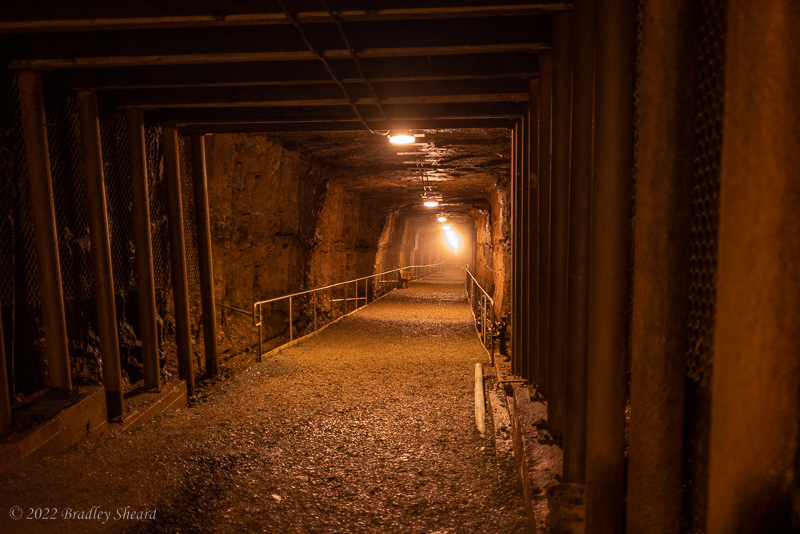 |
 | |
| View inside the no longer operating Bell Island mine (top); display of objects donated by the family of Rolf Ruggeberg in the mine museum (bottom) |
Diving the Bell Island Wrecks
ore carrier Rose Castle (sunk November 2, 1942 by U-518)
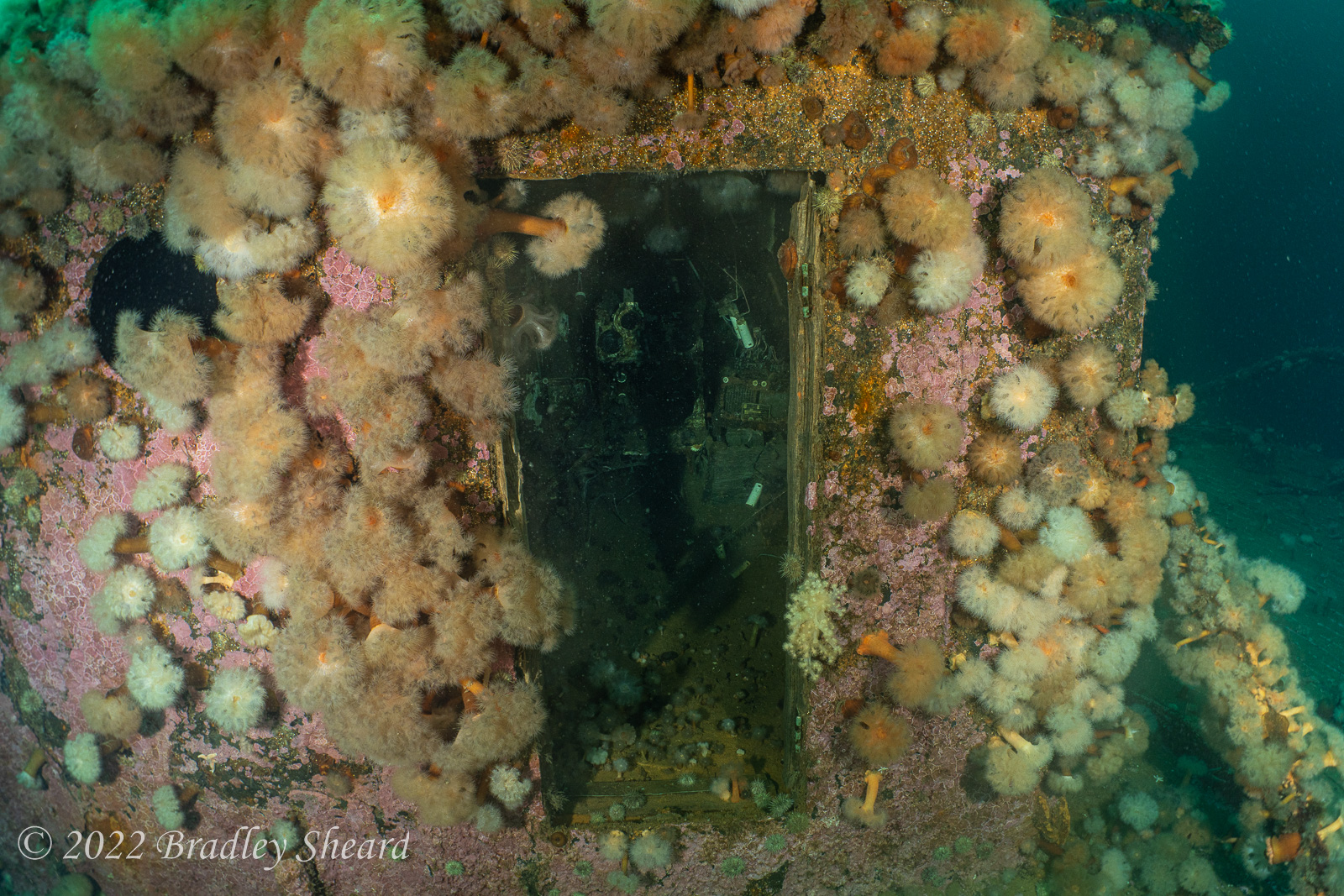 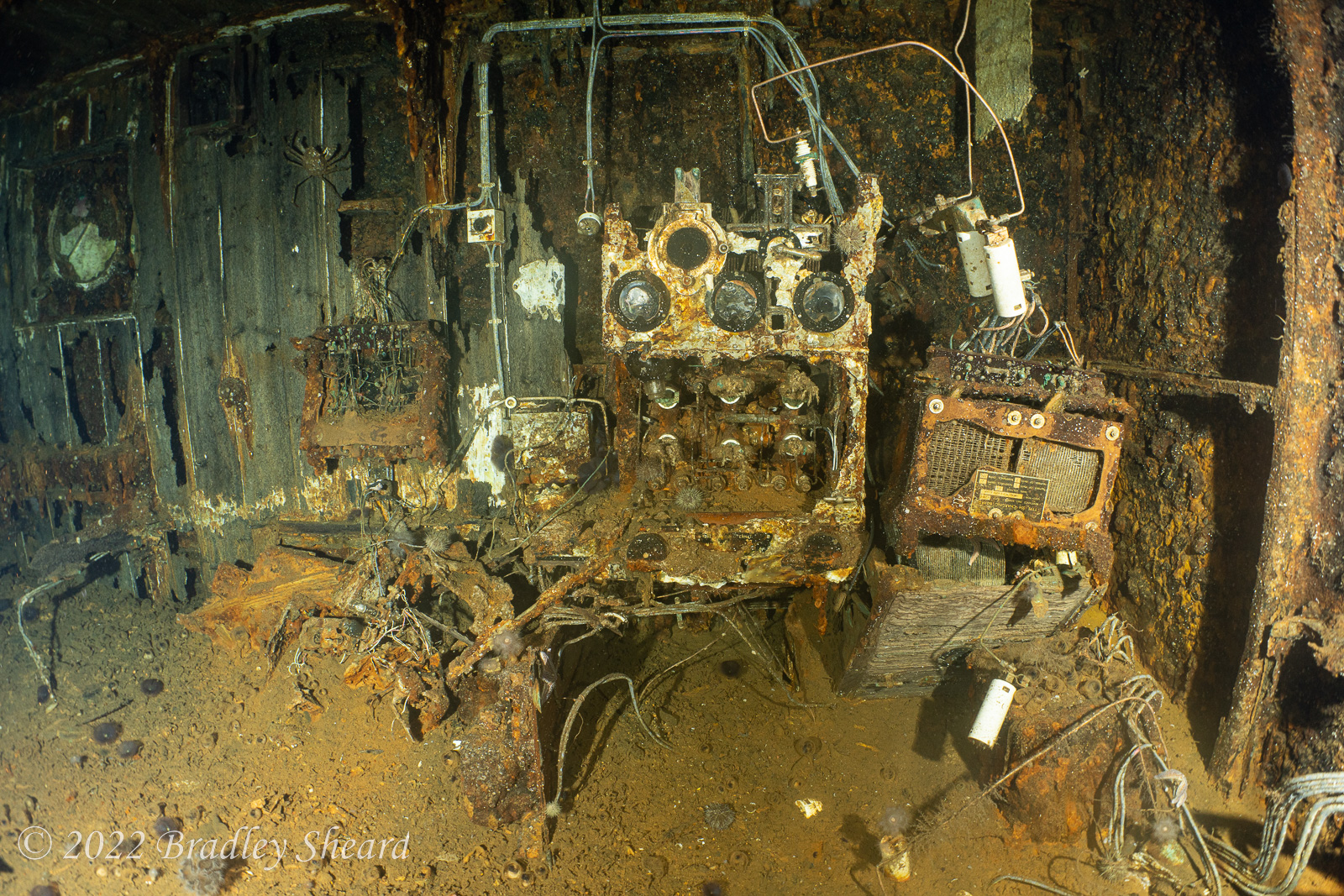 |
| open doorway into the ship's radio room (left); inside the radio room and the remains of the Marconi set (right) |
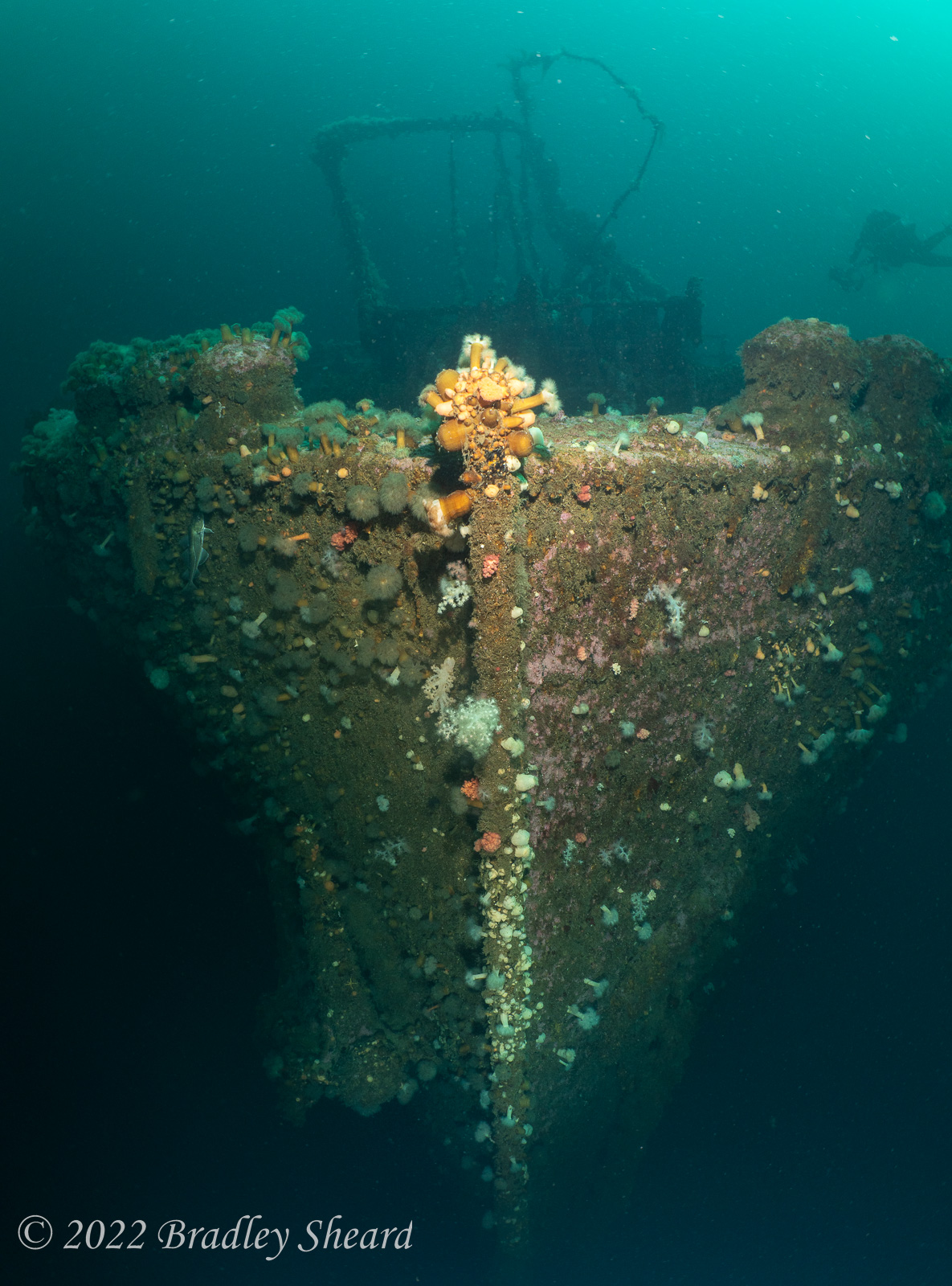 |
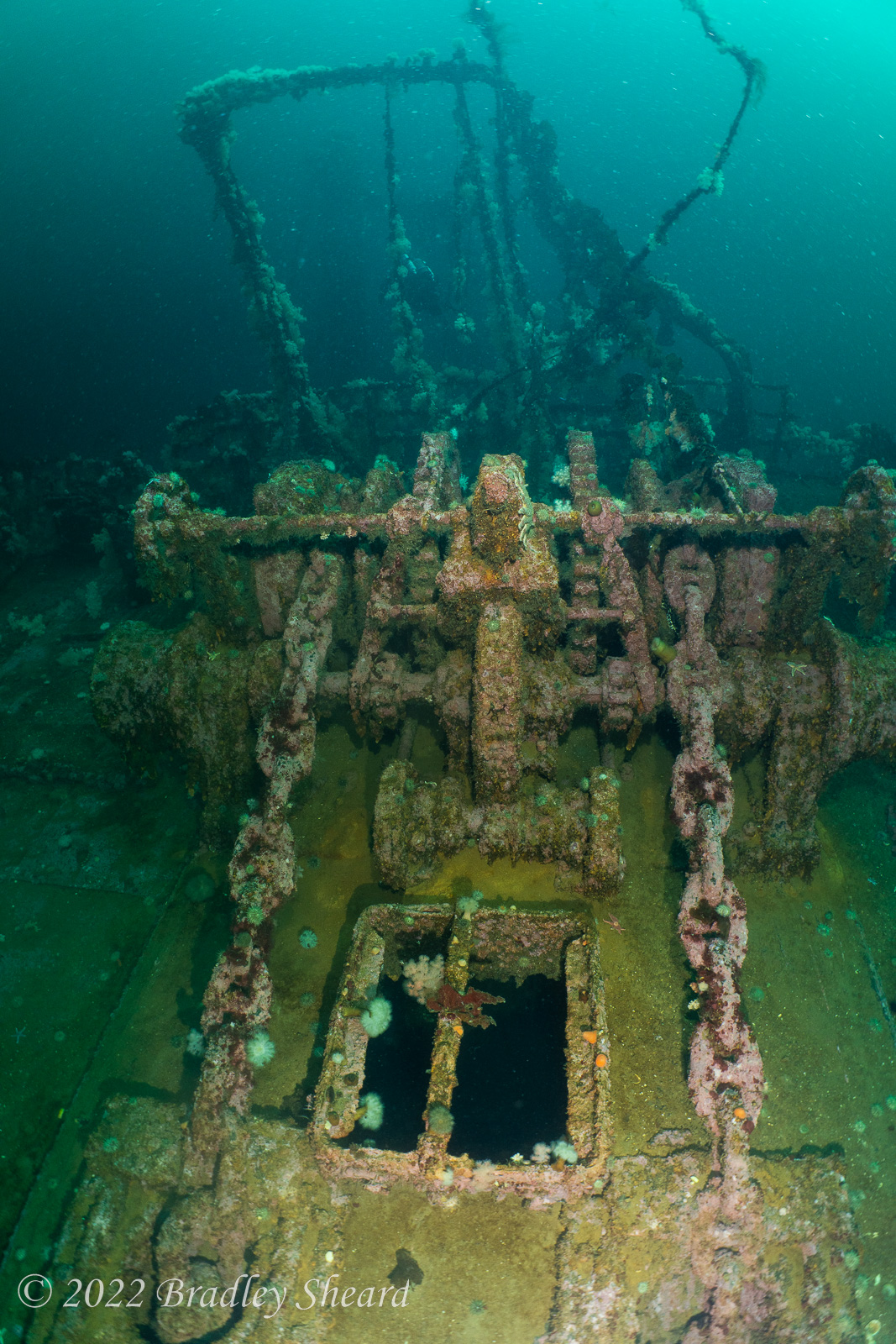 |
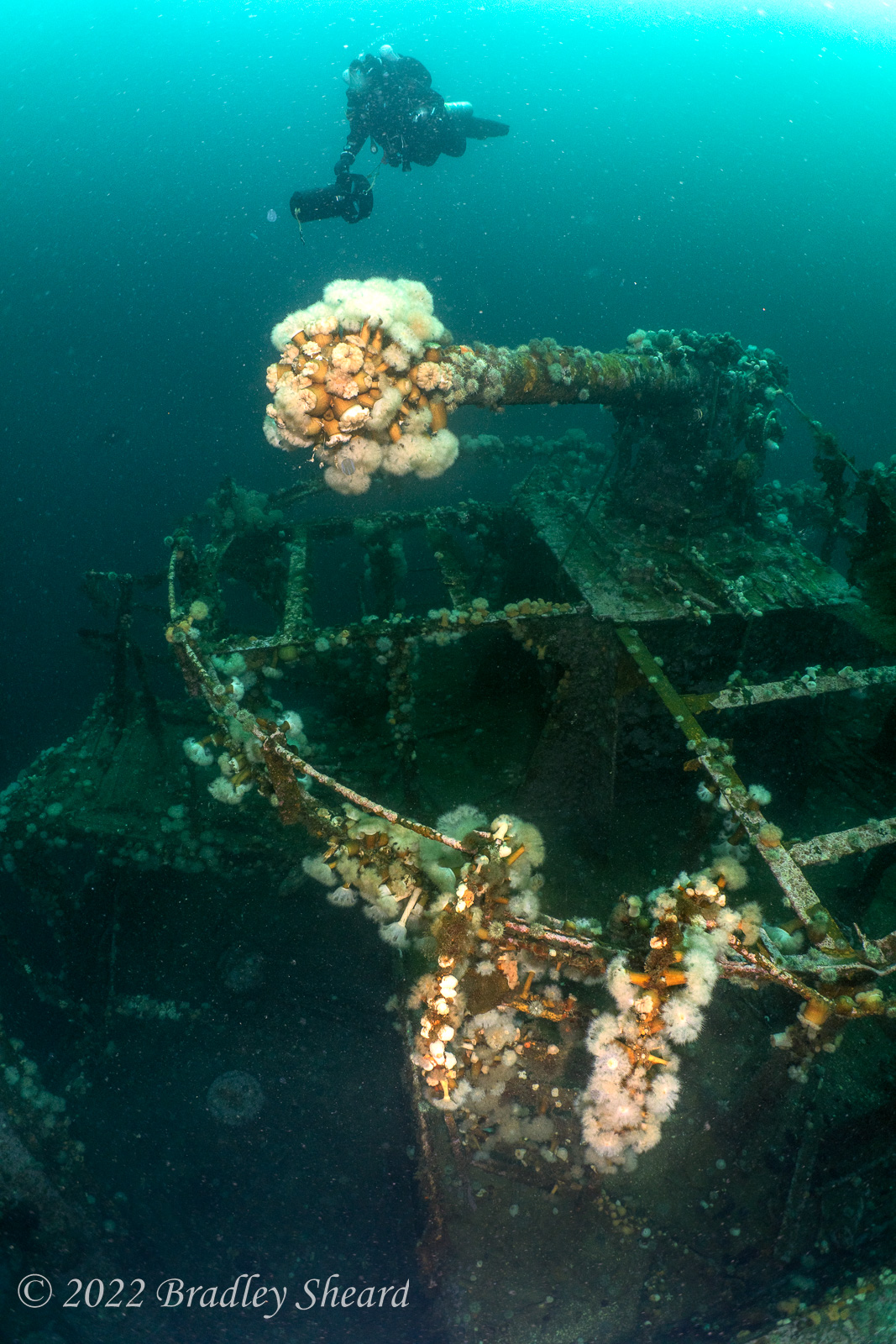 |
| Rose Castle's bow (left); anchor windlass (center); stern gun and platform (right, with Karen Flynn) | ||
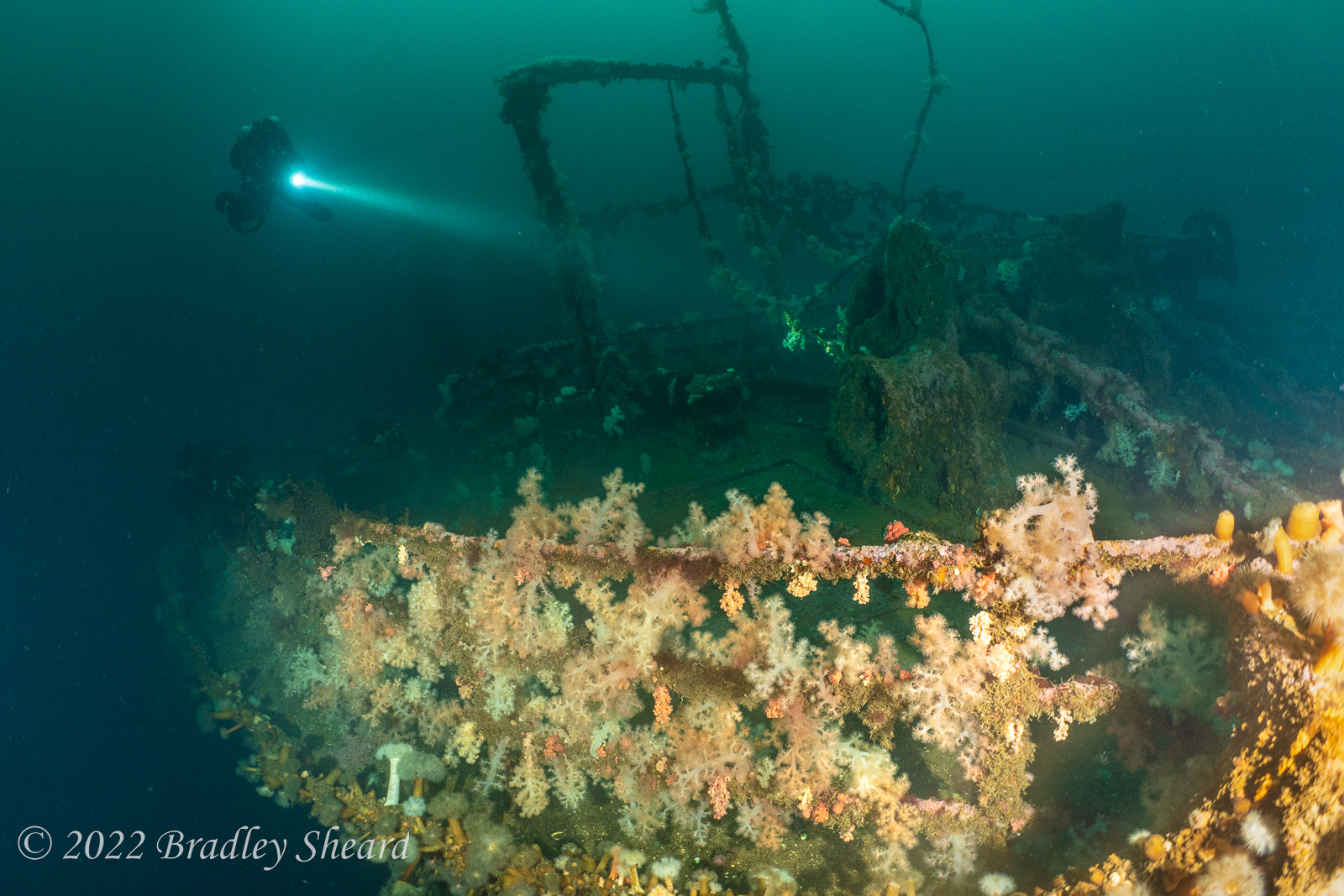 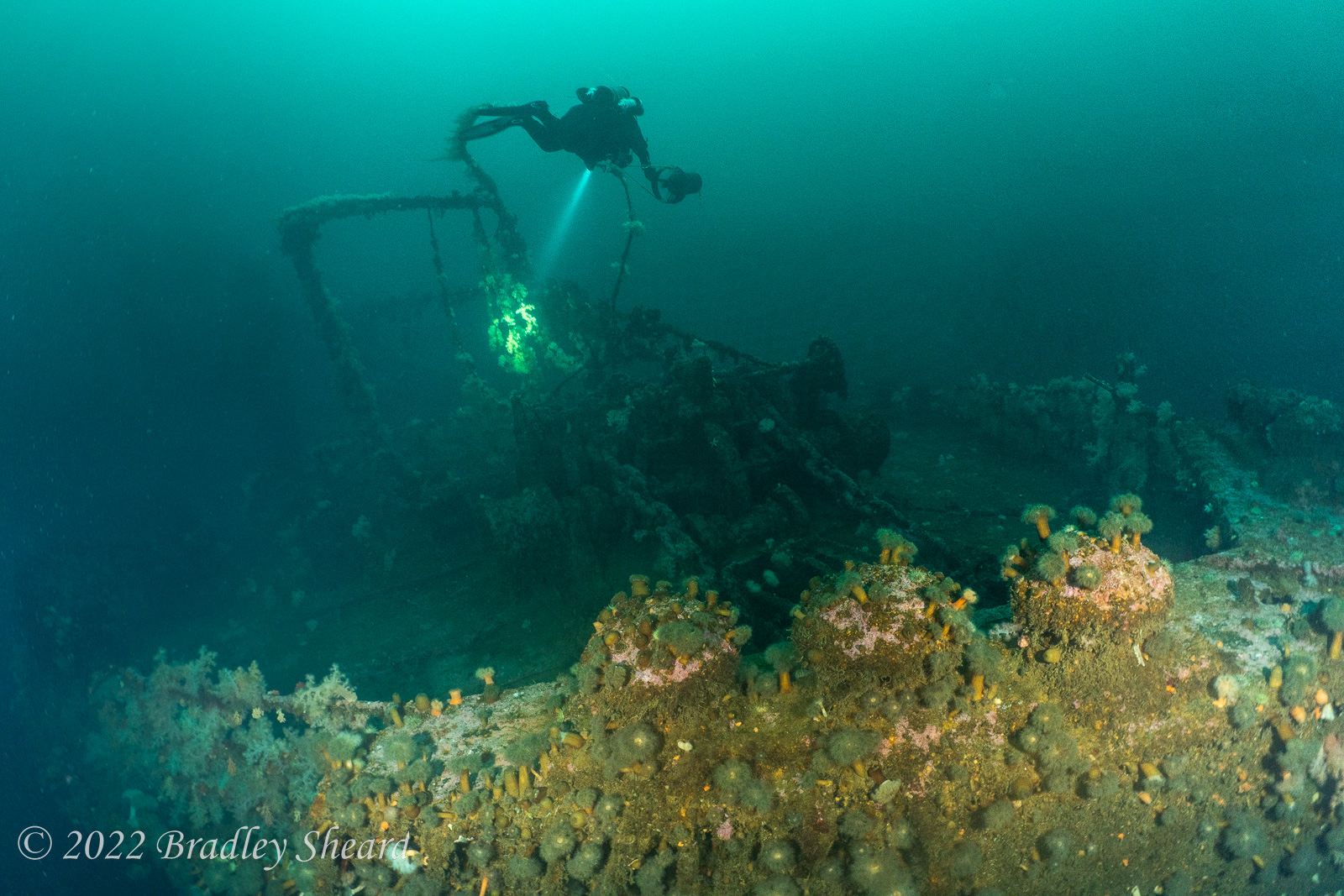 |
| Two views of the ship's bow (diver is Karen Flynn) |
ore carrier Lord Strathcona (sunk September 5, 1942 by U-513)
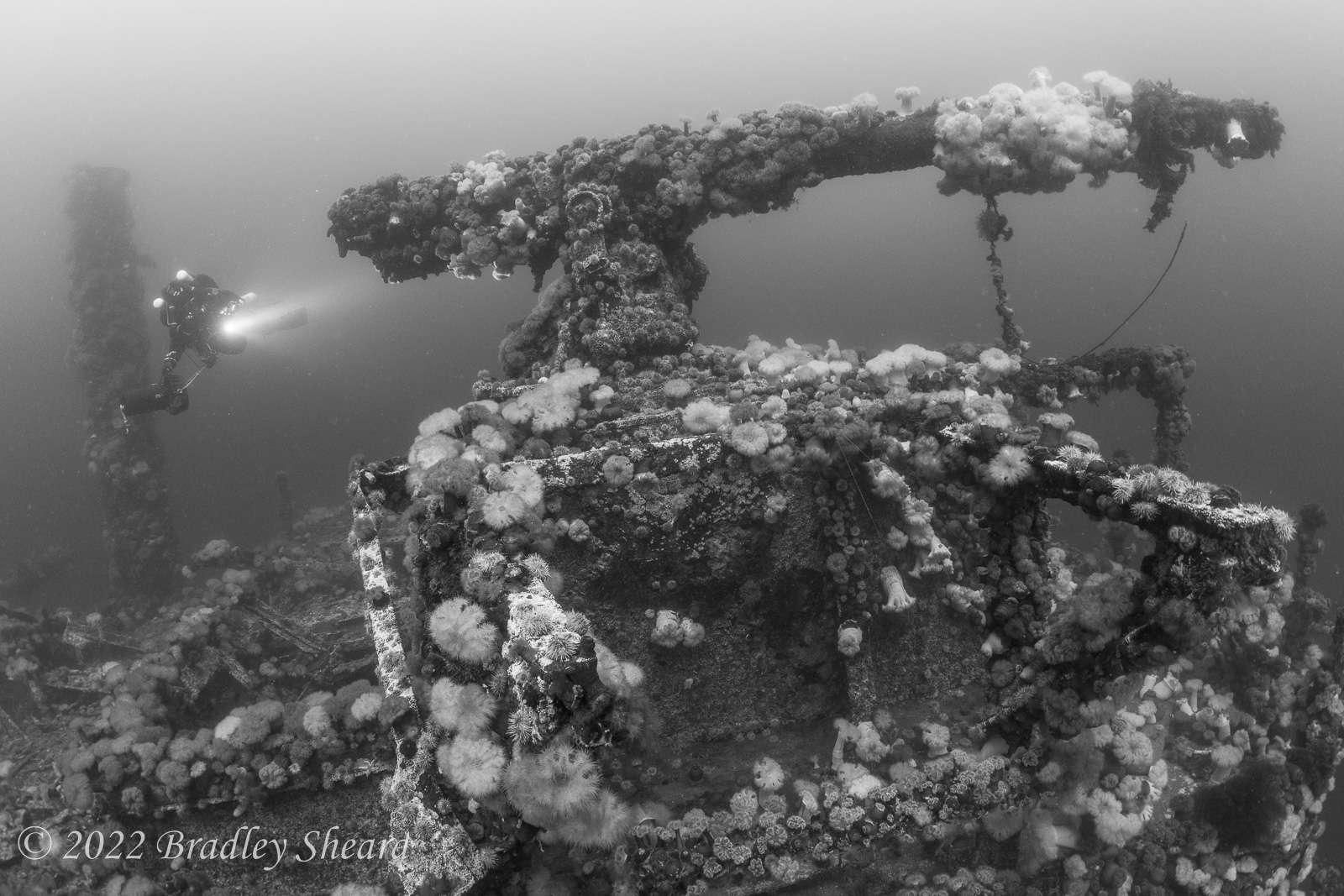 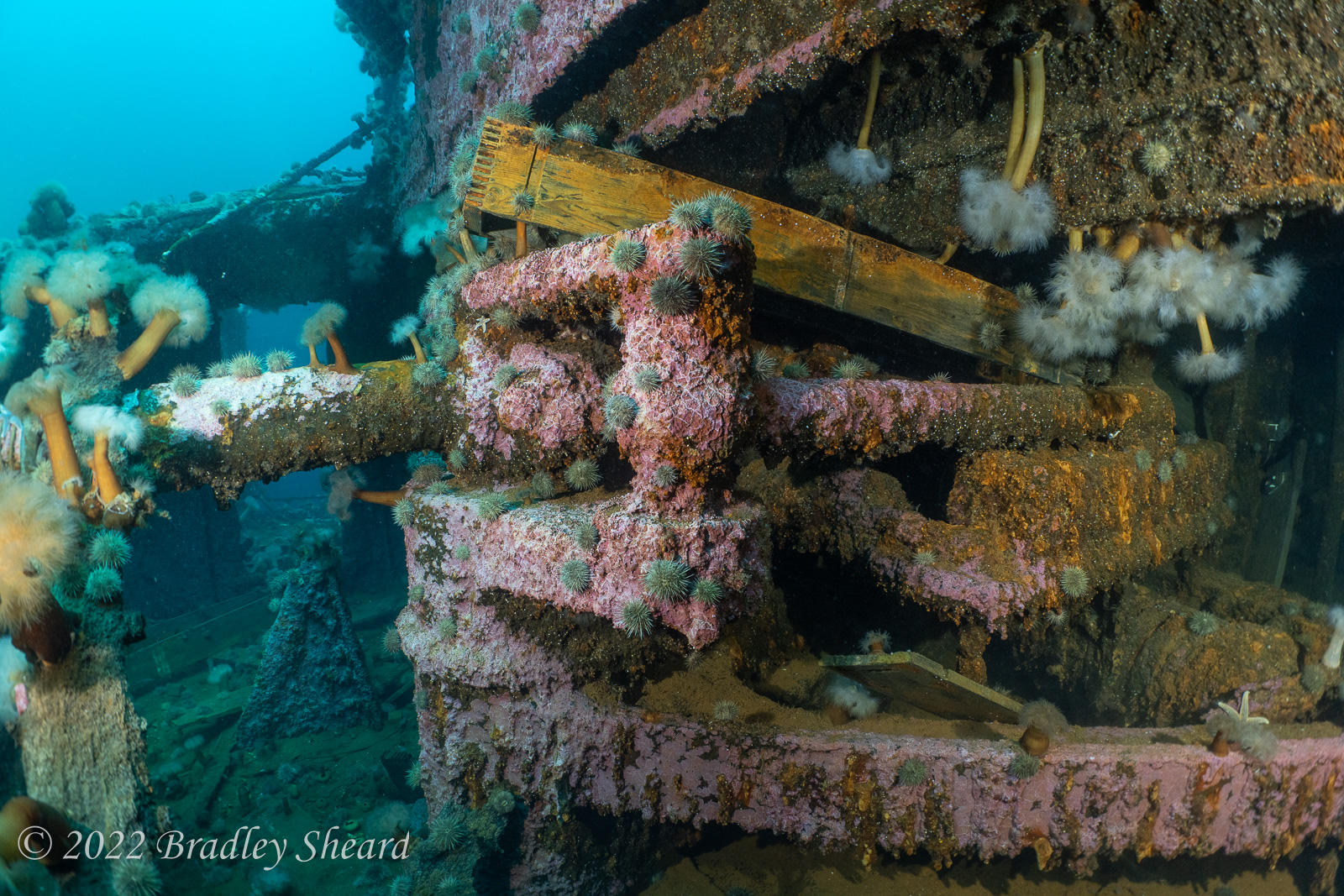 |
| Lord Strathcona's stern gun (left w/ Karen Flynn); ship's steering gear beneath the gun plaform (right)> |
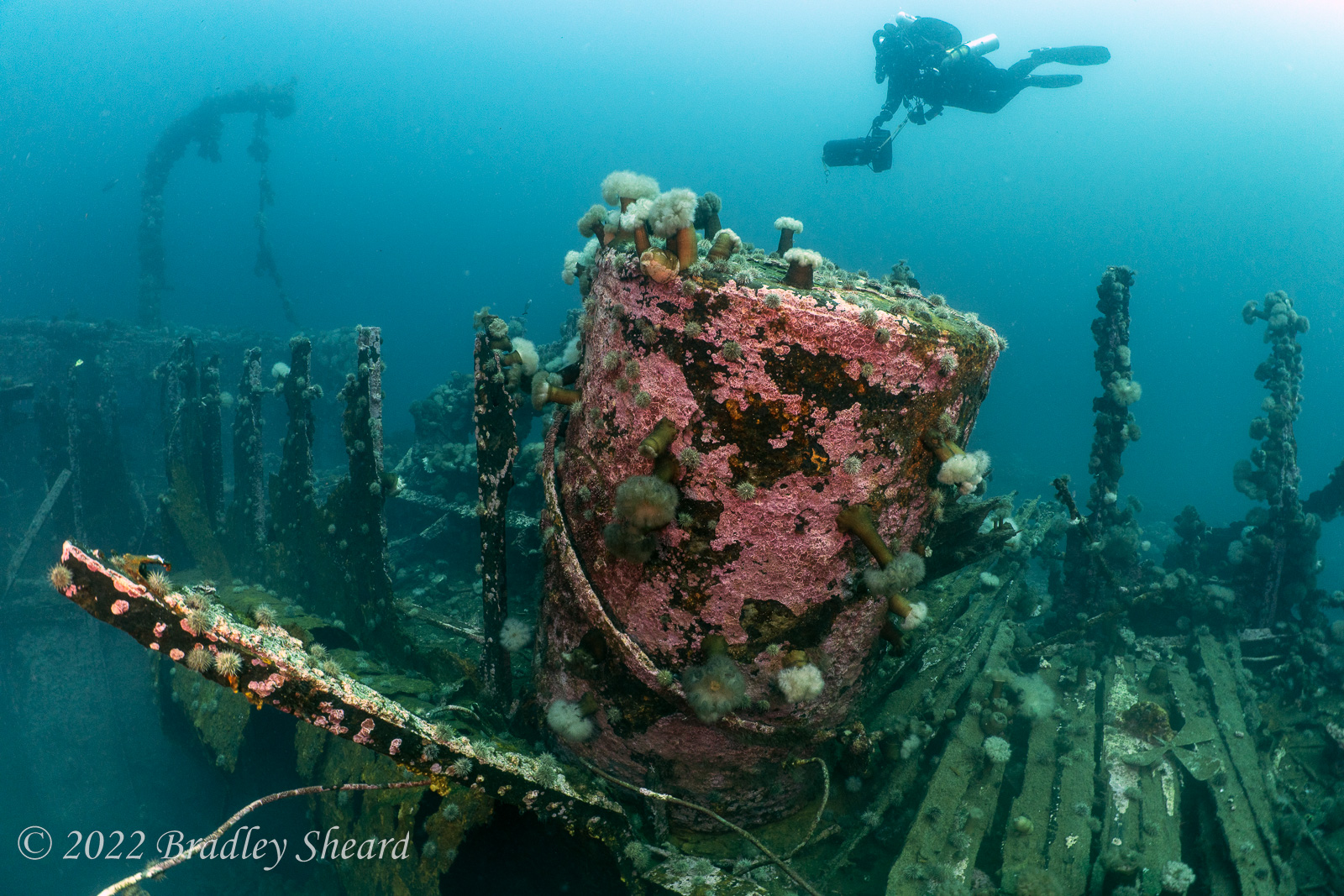 | 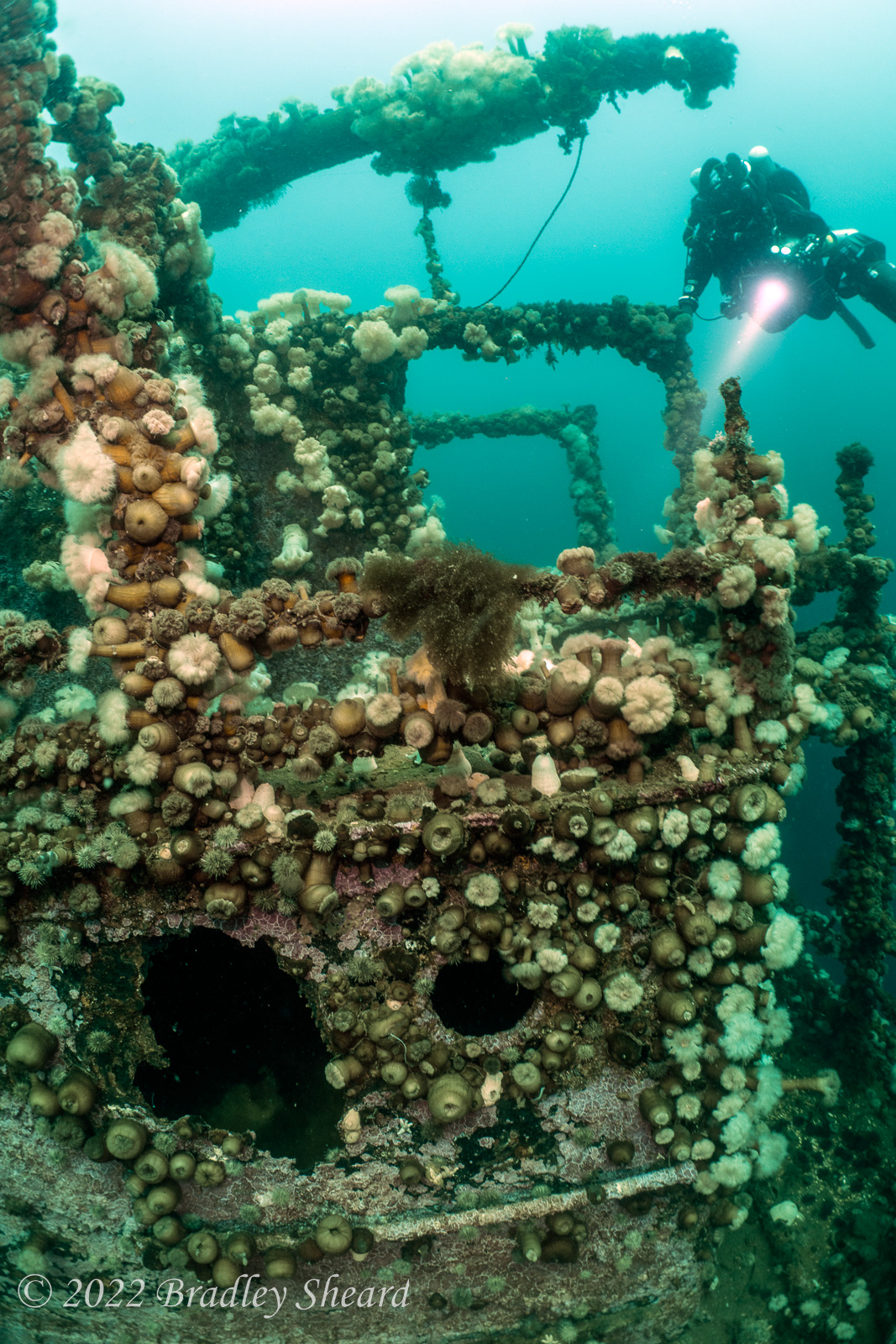 |  |
| Wooden decking still intact (left w/ Karen Flynn); Karen Flynn over the ship's heavily overgrown superstructure (center); Mike Powell examines the crow's nest on a fallen mast (right) | ||
ore carrier PLM27 (sunk November 2, 1942 by U-518)
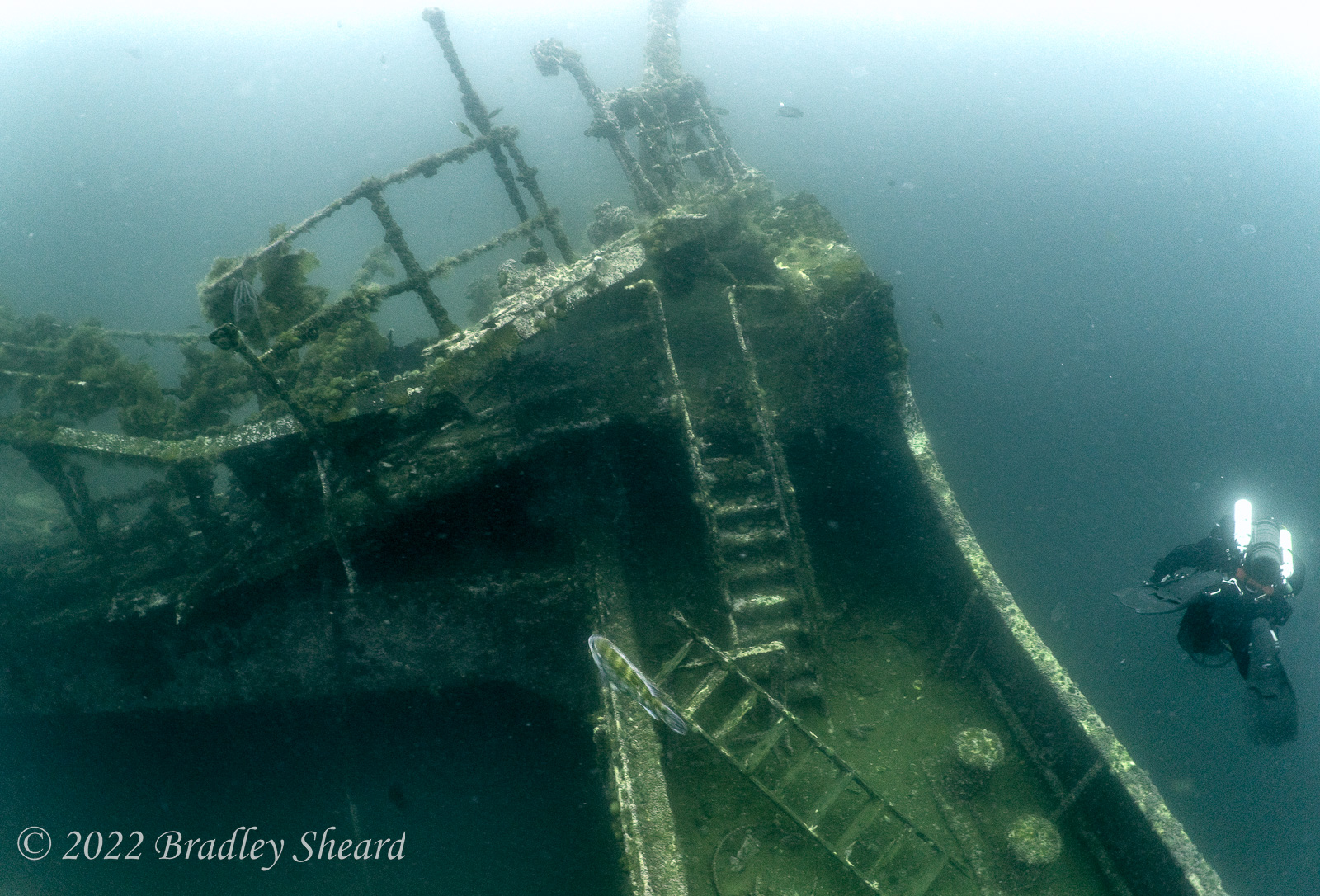 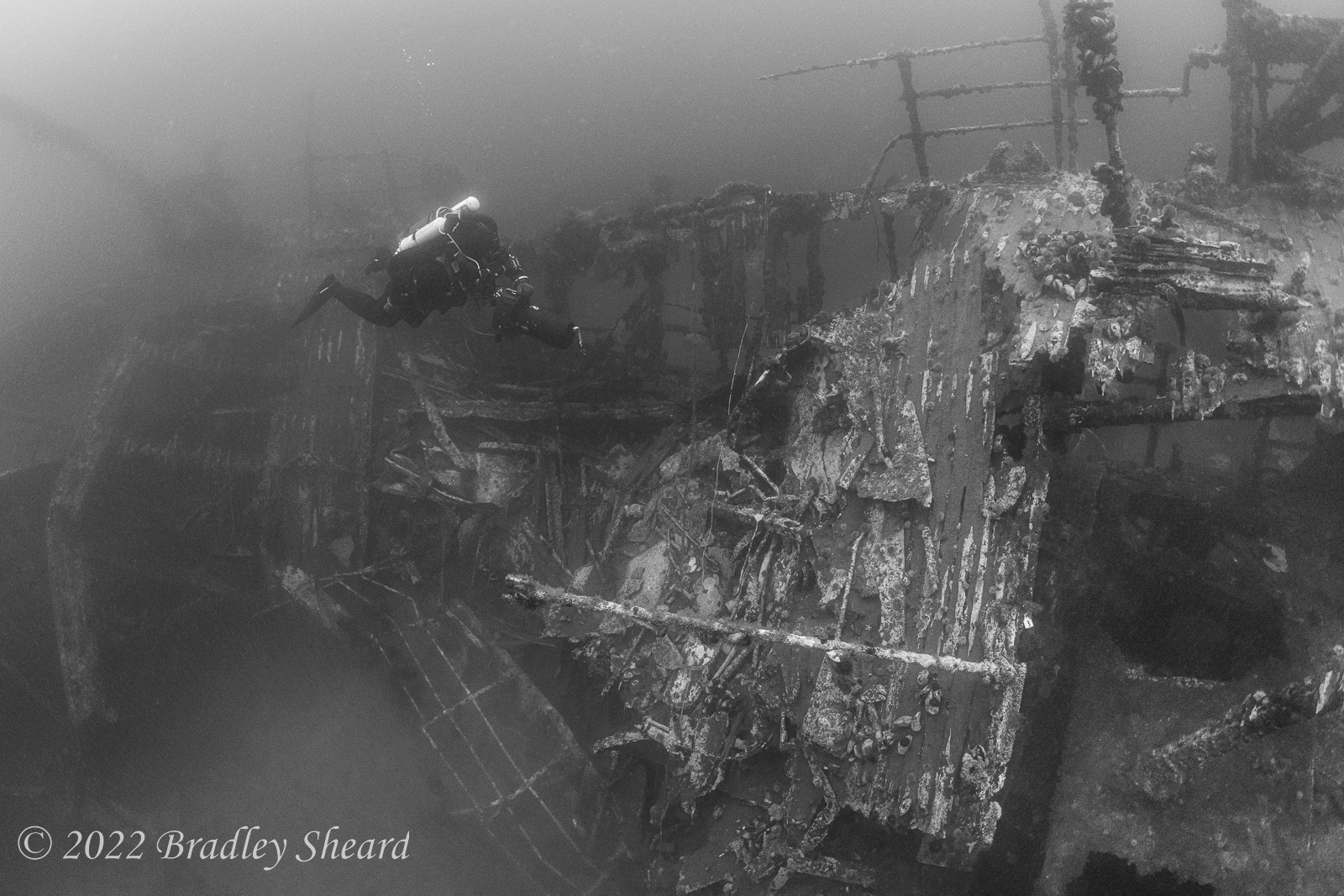 |
| damaged superstructure on PLM27 (left w/ Mike Powell); Karen Flynn swims along the ship's deck and superstructure (right) |
 |  |  |
| Starboard anchor hanging from ship's hawse pipe (left w/ Mike Powell); Mike Powell examines the wreckage of a lifeboat alongside the hull (center); deck scene (right, w/ Mike Powell) | ||
ore carrier Saganaga (sunk September 5, 1942 by U-513)
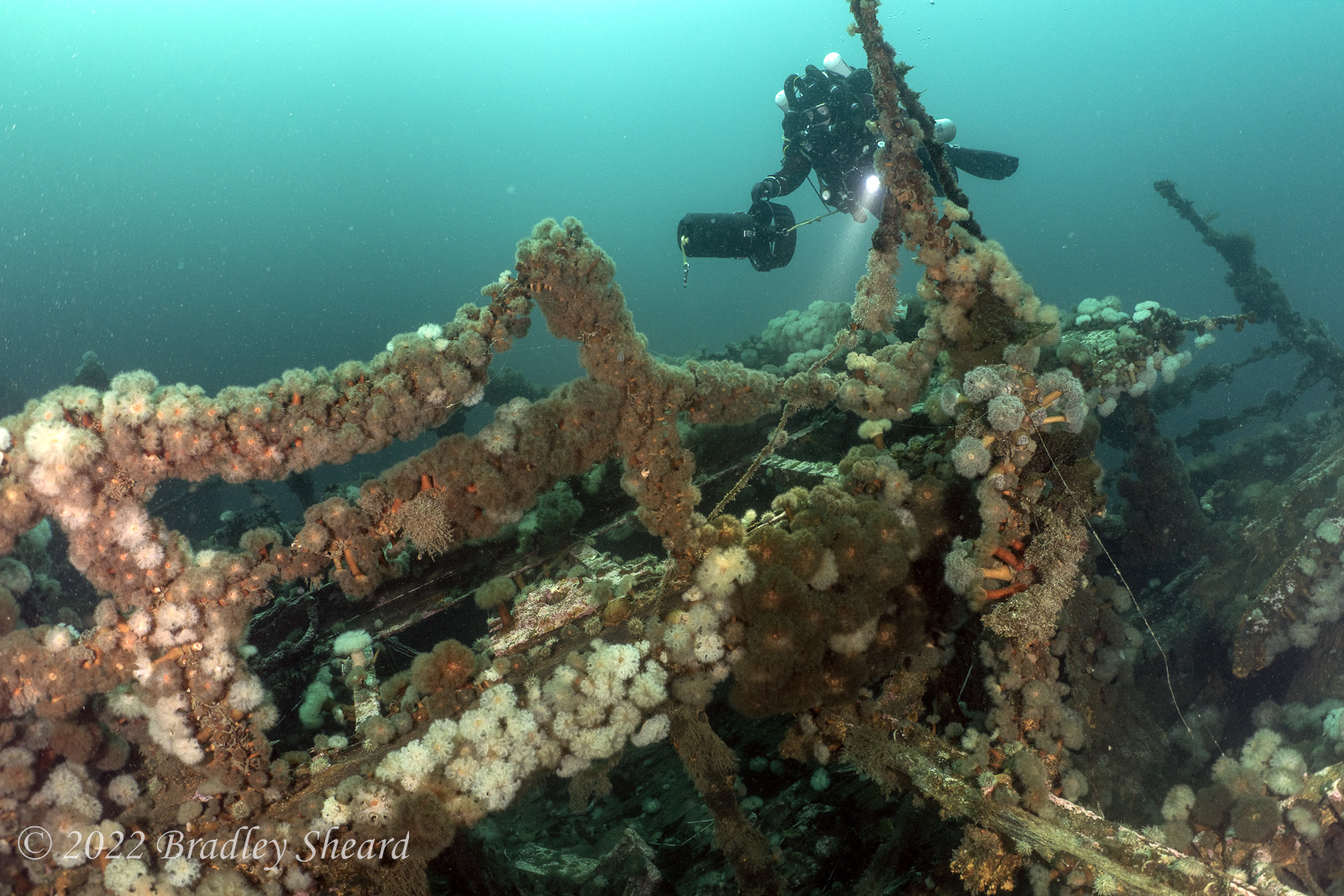 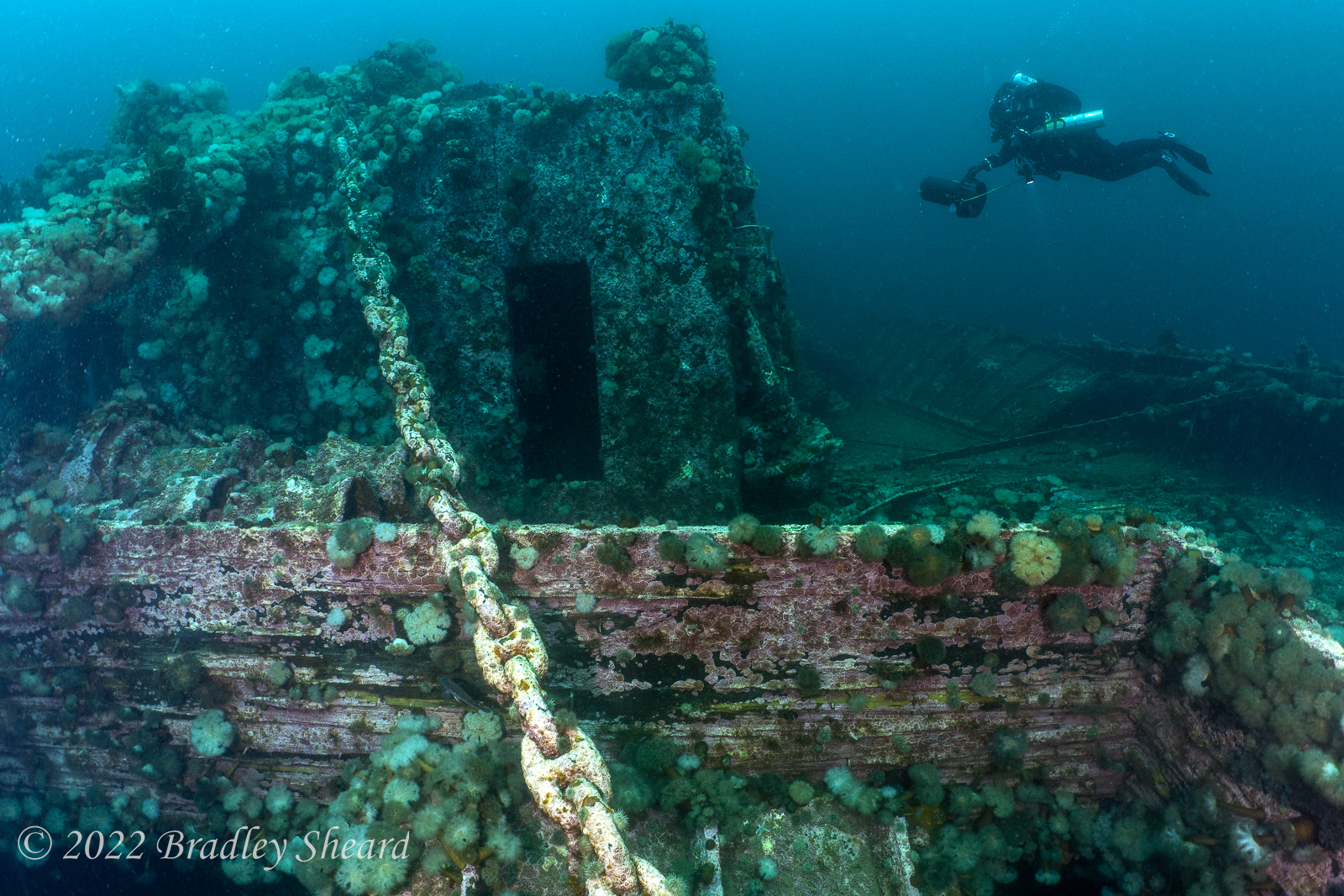 |
| Karen Flynn cruises along the desk of the ore carrier Saganaga (right and left) |
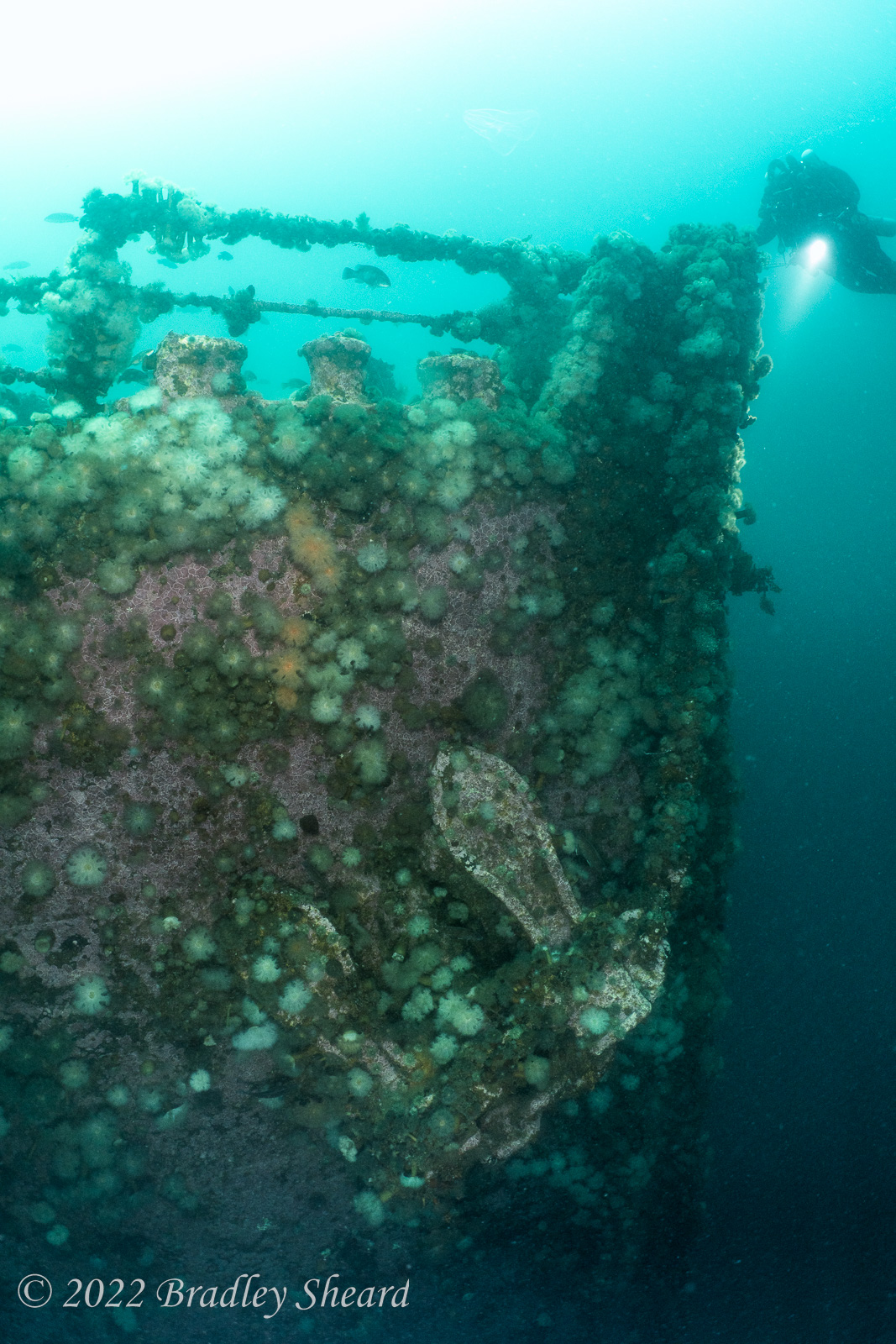 | 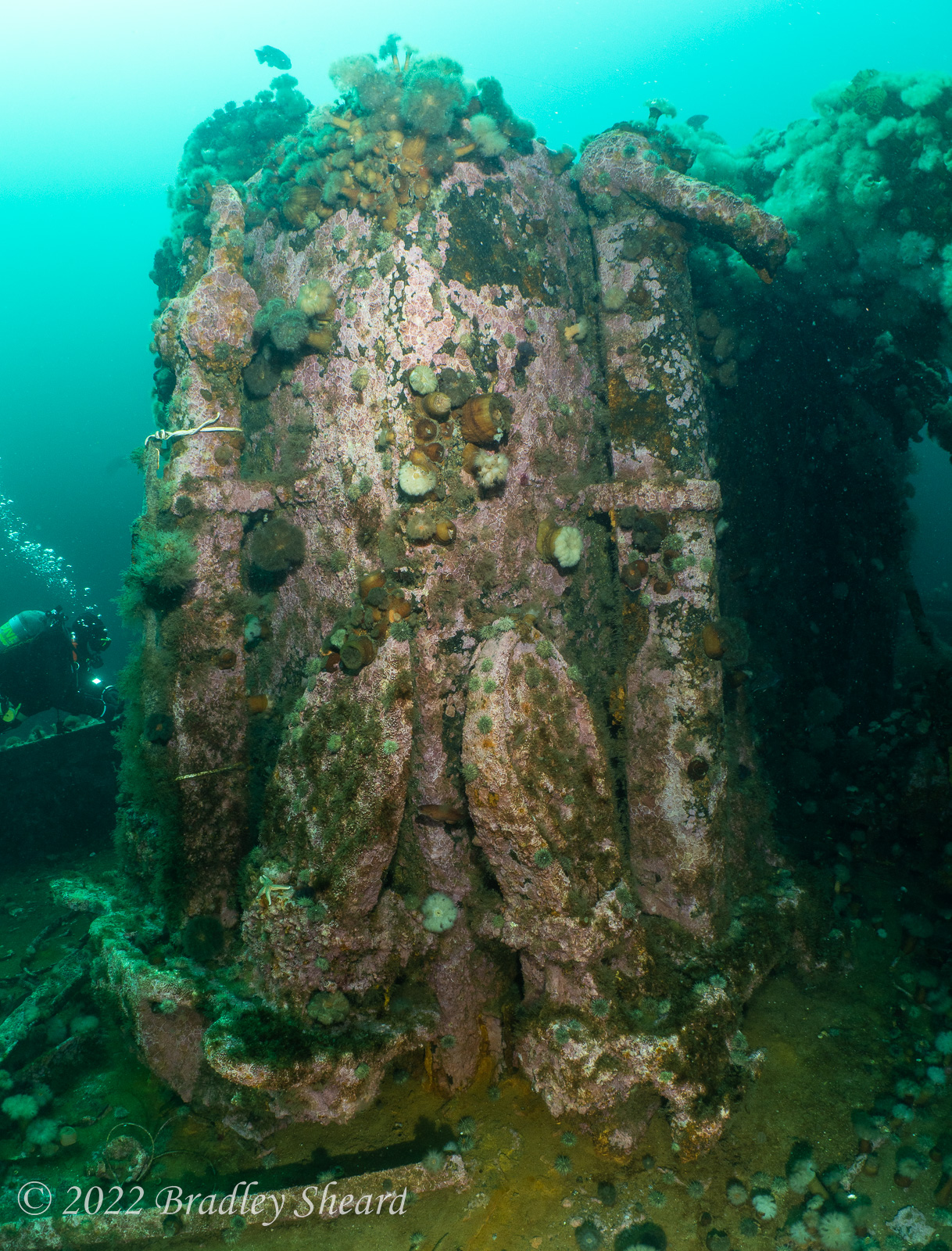 | 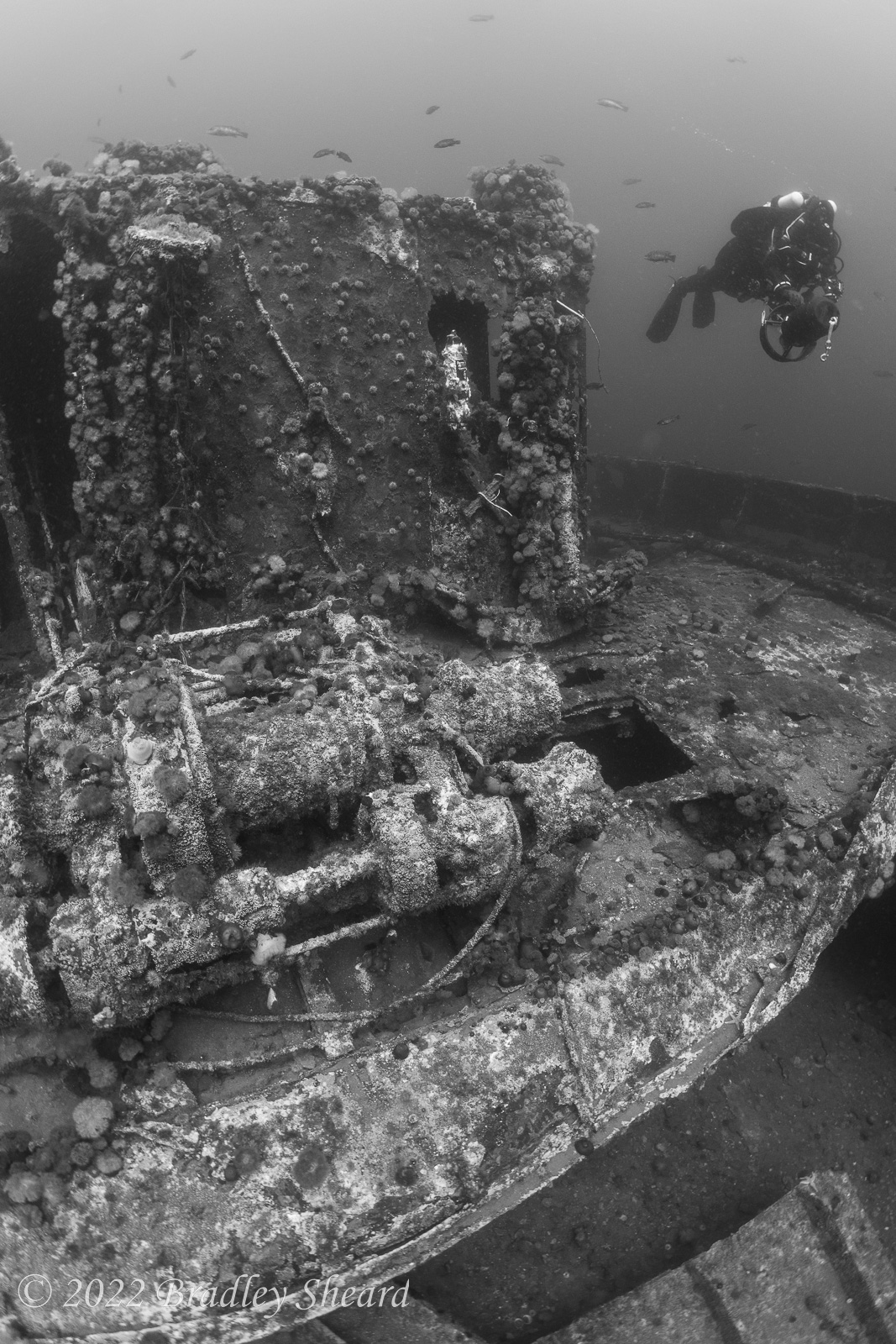 |
| Karen Flynn at the freighter's bow (left); a pair of anchors stowed on deck (center); Karen Flynn near a deck house (right) | ||
Special thanks to Karen Flynn and Mike Powell for their much appreciated modeling efforts in the pictures above!!
